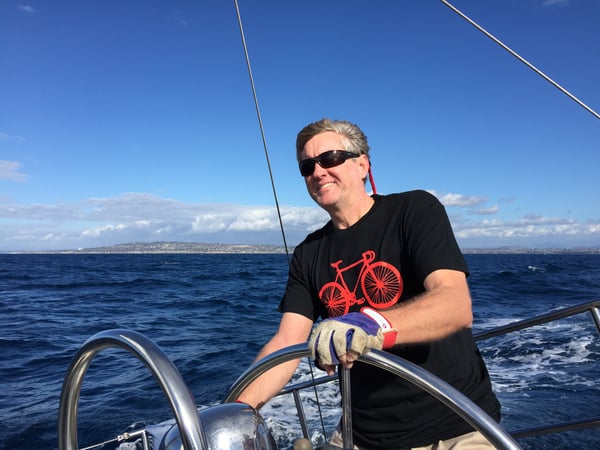Those who know me understand some of my passions - travel, food, history and - most of all - sailing. There are few better ways to clear those cobwebs out than a day behind the wheel of a sailboat with the wind in your hair. Why do I mention this here? Because there's a mindset of a sailboat captain that has a distinct influence on how I approach a marketing project - and I might term it as part of a useful philosophy.

I learn something every time I go out sailing - and every time I undertake a new project with a new team. Never assume that all the lessons are already learned! In marketing that would be called hubris - on a boat it would run counter to good seamanship.
So I had this learning experience in mind when I got myself involved in a recent sail from Cabo San Lucas to San Diego - the so-called Baja Bash. While this trip is not perhaps the same kind of big deal as a trans-Pacific crossing, it certainly a wake-up call for those of us more used to the San Diego day sailing scene. And thats perhaps why I'm writing about it here on a marketing blog - we are moving from very familiar territory to a landscape that requires a different level of planning.
Doing "the bash" may well remain a significant rite of passage simply because it feels like such a different experience from day sails without going half way around the globe. Geographically, the route is almost a natural part of the Socal/Mexico sailing scene, but it presents challenges that take the average fair weather Socal sailor way outside their comfort zone. And it that sense, it’s a test of the sailboat and its crew that very clearly offers an object lesson in mental and logistical preparation for a medium range trip.
So, what are the considerations for the crew when considering this trip back from Cabo?
- Wind direction: Unless good fortune shines, it’s a trip that’s relentlessly into the eye of the wind. As one sailor remarked, if all instruments failed you would be able to get home by simple following the directional pointer of the masthead windex. There are few options for actual sailing here – the engine will likely be running continuously and noisily as you beat upwind.
- Fuel consumption: When considering fuel capacity, it’s not just the distance that needs to be considered. Heading into the wind – and the waves – will likely increase your fuel consumption per hour by up to 50% and reduce the SOG significantly. Can you use all the fuel in your on-board tanks? Running them low may expose the slime garden that you have been cultivating in the balmy SoCal weather for the last several years.
- Spare parts: There’s no option on this trip for emergency parts purchases along the way, so stashing at least one spare of all the obvious vulnerabilities is essential. Consider fuel, cooling and rigging issues etc. And don’t forget the propane!
- Provisioning: Again, there’s little in the way of re-supply options along the route so it’s important to cover the bases for up to 10 days. But don’t assume you will be cooking – the sea state will probably make that hard - so make sure that keeping well fed and hydrated doesn’t require much more than boiling a kettle.
- Plan B anchorages: The choices are limited and far between. The coastline is more remote and rugged than you would imagine.
- Communication: Even in this day and age, you can basically assume there is no real cell phone service available from a little after you leave Cabo until you are nearing Ensenada. This is not an exaggeration. Even though a few towns along the way do seem to offer a few bars, messages and app data support definitely can’t be counted on to work. A satellite tracking and text system seems like a good backup option, even though this is hardly a blue water route.
- Mental and physical stress: It’s important to face the fact that you and the crew are likely to be motoring 24hrs a day for more than a week in fairly rough conditions with little in the way of a break. It’s a potential test of relationships and friendships, with no place to leave the bus.
And the basic challenges don’t seem to have changed much over the years. Reviewing articles form 1992 and onwards reveal very few changes in the infrastructure available along the Baja coast, the potential of rig or boat failure and the distinct possibility of the loss of a crew’s sense of humor - which is definitely bad news.
Bringing this back to the marketing project context - my motto is not to assume that projects are all projects are similar, but actually to assume the opposite - that they end up being different in more ways than you anticipated. And that they need to be approached with a unique perspective.
The full story of the Baja trip is ready for publishing elsewhere with some of the pictures of life on board. Contact me if you feel like a longer version.
Thanks for reading!
.jpg?width=800&height=600&name=HTMSolutionsLogo(web).jpg)